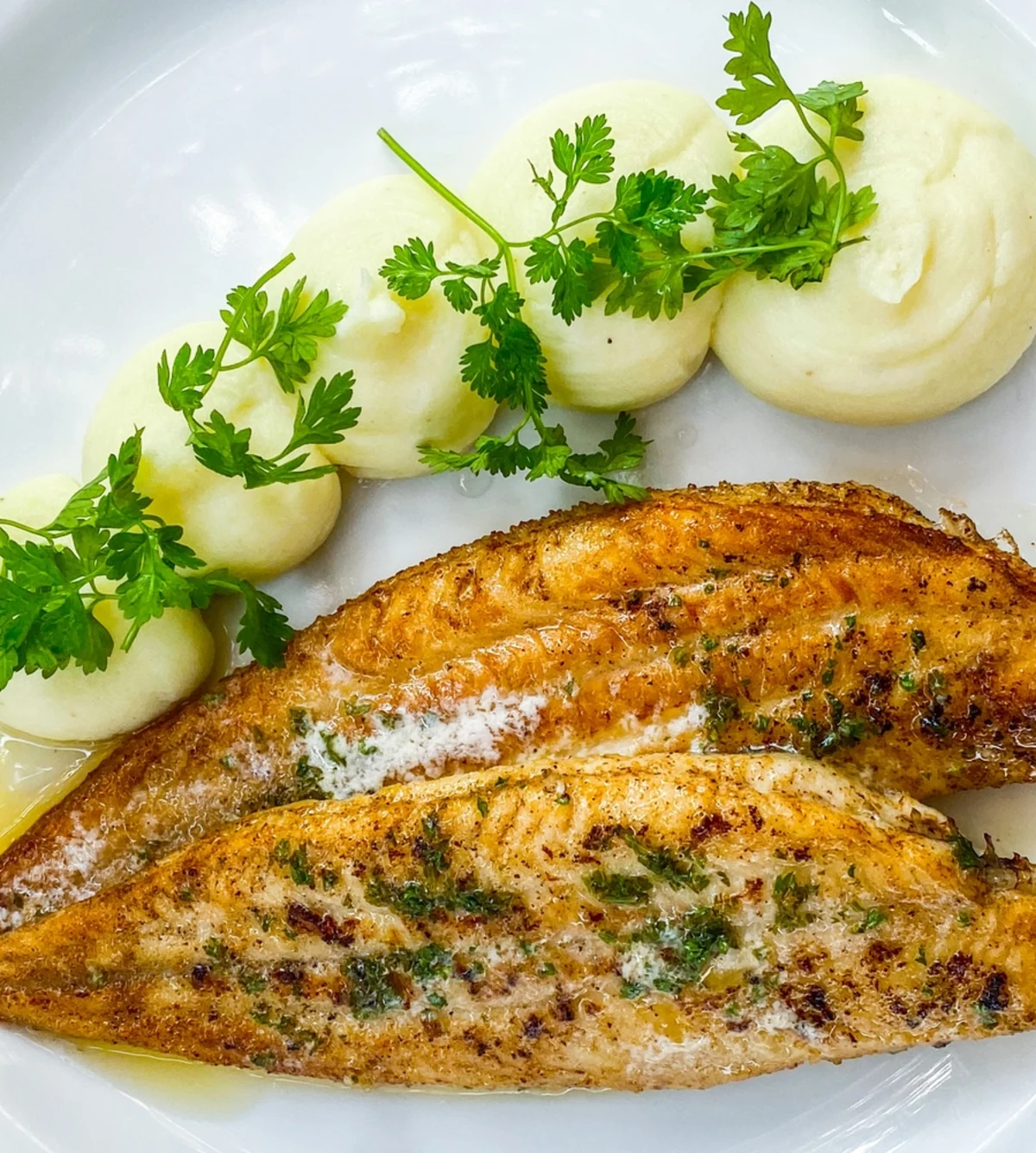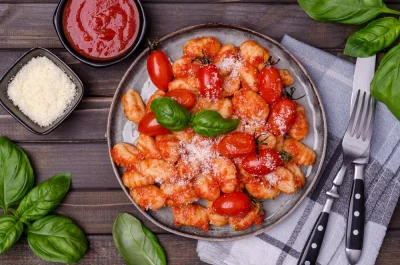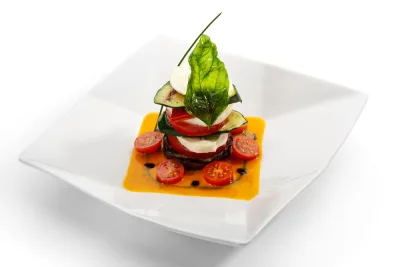
Sole Meunière Recipe & Wine Pairing Guide: A French Classic
There's something magical about the simplicity of French cuisine—how a handful of quality ingredients can transform into something truly extraordinary. Sole Meunière embodies this philosophy perfectly. This classic dish, featuring delicate Dover sole fillets bathed in a golden butter sauce with bright lemon and fresh parsley, has captivated diners for centuries. The beauty lies not in complexity, but in technique and the harmonious balance of flavors. And when you discover the perfect wine pairing for Sole Meunière, you elevate this already elegant dish into an unforgettable dining experience that rivals any French bistro.
The story of Sole Meunière gaining fame in America traces back to Julia Child, who famously declared her first taste of this dish in France as "the most exciting meal" of her life. That transformative moment in 1948 sparked a culinary revolution that brought French cooking into American homes. Today, you can recreate this masterpiece in your own kitchen and explore wine recommendations that complement every buttery, lemony bite.
About This Dish
Sole Meunière translates to "sole in the style of the miller's wife," a name that references the traditional technique of dredging fish in flour before cooking. This method dates back centuries in French culinary tradition and was reportedly a favorite of King Louis XIV in the 17th century. The dish represents the pinnacle of French cooking philosophy: let exceptional ingredients shine through simple, precise preparation.
The technique involves coating delicate sole fillets in flour, pan-frying them in clarified butter until they achieve a light golden crust, then finishing with a sauce of brown butter, fresh lemon juice, and parsley. What makes Sole Meunière truly special is the contrast it creates—the crispy exterior giving way to tender, flaky fish, all enhanced by the nutty richness of browned butter cut with bright citrus acidity.
Traditionally, this recipe was prepared with whole Dover sole, bones and all, but modern adaptations favor boneless fillets for their convenience and accessibility. Dover sole, known as "sole franche" in France, offers a sweet, delicate flavor and firm texture that holds up beautifully to pan-frying. The fish's mild character makes it an ideal canvas for the butter sauce while also creating fascinating possibilities for wine pairing.
In French restaurants, Sole Meunière remains a menu staple, often served tableside with theatrical flair. The dish exemplifies the French concept of "cuisine bourgeoise"—refined home cooking that's elegant yet approachable. When Julia Child introduced this recipe to American audiences through her cookbook "Mastering the Art of French Cooking," she democratized French cuisine and proved that restaurant-quality dishes could be achieved in home kitchens with proper technique and quality ingredients.
Key Ingredients & Their Role
The magic of Sole Meunière lies in the careful selection and preparation of each component. Dover sole serves as the star, prized for its delicate, slightly sweet flavor and firm yet tender texture. Unlike other flatfish, Dover sole maintains its structure during cooking, creating that perfect flaky bite. When shopping at your local fish market or specialty grocer, look for fillets that smell fresh and ocean-clean, with translucent, moist flesh. The quality of your sole will make or break this dish.
Unsalted butter plays multiple roles in this recipe. You'll use it for cooking the fish and creating the signature sauce. The butter should be high-quality European-style butter with higher butterfat content when possible, as it provides richer flavor and better browning. When melted and heated properly, butter develops nutty, caramelized notes called "beurre noisette" or brown butter, which adds complexity to the simple sauce. This richness becomes crucial when considering wine pairing—you'll want wines with enough body and character to stand up to the butter without being overwhelmed.
Fresh lemon juice cuts through the butter's richness, providing essential brightness and acidity. Always use freshly squeezed juice rather than bottled—the difference is remarkable. The lemon not only balances the dish but also enhances the sole's natural sweetness. This acidic component creates a bridge to wine, as the citrus notes can harmonize beautifully with crisp white wines.
All-purpose flour creates the light coating that gives the fish its golden crust. This isn't a heavy breading; rather, it's a delicate layer that protects the fish during cooking while adding textural contrast. The flour also helps the butter sauce cling to the fish.
Parsley, preferably flat-leaf Italian parsley, adds a fresh, slightly peppery note and visual appeal. While the recipe calls for finely chopped parsley in the sauce, don't underestimate this herb's contribution—it provides a herbaceous quality that complements both the fish and potential wine pairings.
The mashed potatoes accompanying the dish offer creamy comfort and help balance the plate. Made with heavy cream and butter, they provide a neutral backdrop that allows the sole to shine while offering textural variety. Understanding these flavor components—the buttery richness, bright acidity, delicate fish, and creamy potatoes—helps you appreciate why certain wines create the perfect match for this classic preparation.
Recipe
Prep Time: 40 minutes Cook Time: 10 minutes Total Time: 50 minutes Servings: 4 Difficulty: Moderate
Ingredients
- 4 fillets Dover sole fillets
- 3 tbsp (divided) Unsalted butter
- 2 tbsp (freshly squeezed) Lemon juice
- 3 tbsp All-purpose flour
- 2 tbsp Vegetable oil
- 2 tbsp (finely chopped, plus extra for garnish) Parsley
- 600 g (peeled and roughly chopped) Potatoes
- 1/4 cup Heavy cream
- to taste Salt
- to taste Black pepper
- 4 sprigs (for garnishing) Chervil
Instructions
- Peel and roughly chop 600 g of potatoes. Bring a pot of salted water to a boil, add the potatoes, and cook for 20-25 minutes until tender.
- While the potatoes boil, season the Dover sole fillets with salt and black pepper on both sides.
- Place all-purpose flour on a plate. Dredge the fish fillets lightly in the flour, shaking off any excess.
- In a large skillet, heat 2 tbsp of vegetable oil and 1 tbsp of butter over medium heat until the butter foams. Fry the fish fillets for 2-3 minutes on each side until golden brown. Transfer to a plate and keep warm.
- In the same skillet, melt the remaining 2 tbsp of butter over low heat. Stir in 2 tbsp of freshly squeezed lemon juice and 2 tbsp of finely chopped parsley. Mix and remove from heat to prevent overcooking.
- Once the potatoes are cooked, drain the water and return the potatoes to the pot. Mash thoroughly, then stir in 1/4 cup of heavy cream and 1 tbsp of butter. Season with salt and pepper to taste. Mix until smooth.
- Plate the dish by piping or spooning the mashed potatoes elegantly onto the side of the plate. Place two golden fillets next to the potatoes. Drizzle the lemon butter sauce over the fish.
- Garnish the dish with a sprig of chervil and a sprinkle of chopped parsley. Serve immediately.
Nutrition Facts (per serving)
- Calories: 400 kcal
- Protein: 36.0g
- Fat: 28.0g
- Carbohydrates: 25.0g
- Salt: 2.0g
Dietary Information
Gluten-free, Contains dairy, Nut-free
Perfect Wine Pairings
Finding the ideal wine for Sole Meunière requires understanding the dish's key characteristics: delicate fish, rich butter sauce, bright lemon acidity, and subtle herb notes. The wine pairing should complement without overpowering the sole's gentle sweetness while having enough body to match the butter's richness. Here are expert wine recommendations that create the perfect match.
White Burgundy (Chardonnay) stands as the classic pairing for this dish. A Chablis or Meursault from Burgundy offers crisp acidity and mineral notes that cut through the butter while complementing the fish's delicate flavor. Look for bottles in the $25-35 range at Total Wine or your local wine shop. The beauty of Burgundian Chardonnay lies in its balance—it provides enough weight to stand up to the butter sauce without overwhelming the sole. For a domestic alternative, seek out California Chardonnays from cooler regions like the Sonoma Coast or Santa Barbara County. These wines offer similar mineral qualities and refreshing acidity. Brands like La Crema or Flowers produce excellent options in the $20-30 range available at BevMo and Trader Joe's.
Oregon Pinot Gris offers another fantastic wine pairing option. Oregon producers craft Pinot Gris with more weight and texture than typical Italian Pinot Grigio, creating wines with stone fruit flavors and subtle richness that harmonize beautifully with the butter sauce. The variety's natural acidity brightens the dish while its fuller body matches the sole's preparation. Look for bottles from Willamette Valley producers like King Estate or A to Z Wineworks, typically priced between $15-25 and readily available at Total Wine.
Muscadet from the Loire Valley represents a more traditional French pairing. This crisp, mineral-driven white wine features subtle citrus notes and a characteristic saline quality that echoes the ocean origin of the sole. Muscadet's bright acidity and light body allow the fish to remain the star while providing refreshing contrast to the butter. Despite its elegance, Muscadet remains one of the best values in French wine, with excellent bottles available for $12-18 at most wine retailers. The wine's mineral character, often described as "wet stones," creates a sophisticated complement to this classic dish.
Albariño from Spain or California brings a different dimension to the pairing. This aromatic white wine offers peach and citrus notes with bracing acidity and sometimes a slight effervescence that cleanses the palate between bites. Spanish Albariño from Rías Baixas typically costs $15-22 and pairs wonderfully with the lemon in the sauce. California producers in regions like Edna Valley have also embraced Albariño, creating more fruit-forward versions that work equally well. Check Trader Joe's for value-priced Spanish Albariño options.
When selecting your wine, consider the preparation nuances. If you've added capers or extra lemon, lean toward wines with higher acidity like Muscadet or Chablis. For a richer preparation with more butter, opt for fuller-bodied Chardonnay. The Vinomat app can help you explore these wine pairing options based on your specific preparation and personal taste preferences, ensuring you discover the perfect match for your Sole Meunière.
Cooking Tips & Techniques
Mastering Sole Meunière requires attention to detail and proper technique. Dry your fish thoroughly before seasoning and flouring—this is perhaps the most critical step. Use paper towels to pat the fillets completely dry on both sides. Excess moisture prevents proper browning and can cause the flour coating to become gummy rather than crisp. This simple step separates restaurant-quality results from disappointing home attempts.
Don't over-flour the fish. You want a light, even coating that will crisp up during cooking, not a thick crust. After dredging the fillets in flour, shake off excess vigorously. Some chefs even recommend using a pastry brush to remove any clumps. The flour should create a whisper-thin layer that protects the fish and aids browning.
Temperature control is everything. Your pan should be hot enough that the butter foams when added but not so hot that it burns immediately. Medium to medium-high heat typically works best. If the butter browns too quickly before you add the fish, your pan is too hot. Conversely, if the fish doesn't sizzle when it hits the pan, the temperature is too low, and you'll end up steaming rather than searing.
Avoid overcrowding the pan. Depending on your skillet size, cook the fillets in batches if necessary. When fish pieces touch in the pan, they steam rather than sear, preventing that golden crust from forming. Leave at least an inch between fillets. If cooking in batches, keep finished fillets warm in a 200°F oven on a wire rack.
Watch the cooking time carefully. Sole cooks incredibly quickly—usually just 2-3 minutes per side. Overcooked sole becomes tough and dry, losing its delicate texture. The fish is done when it turns opaque and flakes easily with a fork. If you're uncertain, check the thickest part of the fillet; it should be just opaque all the way through.
Make the butter sauce with finesse. After removing the fish, wipe excess flour from the pan before making the sauce to prevent a pasty texture. When browning the butter, watch for nutty aromas and a light amber color—this happens quickly, and there's a thin line between perfectly browned and burnt. Remove from heat immediately after adding lemon juice to stop the cooking process.
For the mashed potatoes, use starchy varieties like Russet or Yukon Gold for the creamiest results. Add the cream and butter while the potatoes are still hot for better incorporation. Season generously—under-seasoned potatoes can make the entire dish taste flat.
Serving Suggestions
Presentation elevates Sole Meunière from a simple fish dinner to an elegant dining experience. Plate with intention: arrange the golden fillets slightly overlapping on warmed dinner plates, allowing their beautiful color to shine. Pipe or elegantly spoon the mashed potatoes alongside, using a serving spoon or piping bag to create height and visual interest. The contrast between the crispy-edged fish and creamy potatoes creates appealing textural variety.
Drizzle the lemon butter sauce over the fish at the last moment, allowing some to pool around the fillets while keeping some areas crisp. The sauce should glisten under lighting, showcasing its fresh preparation. Garnish with delicate chervil sprigs and a final sprinkle of finely chopped parsley for color and freshness. A lemon wedge on the side allows diners to adjust acidity to their preference.
Consider accompaniments that won't compete with the dish's refined flavors. Haricots verts (thin French green beans) sautéed simply with butter and garlic make an excellent side, as do roasted asparagus when in season. A light frisée salad with a gentle vinaigrette can cleanse the palate between courses.
Serve immediately while the fish remains hot and the crust crispy. Sole Meunière doesn't hold well, so have everything ready before plating—warm plates, chilled wine glasses, and your selected wine already opened and ready to pour. This attention to timing ensures your guests experience the dish at its absolute peak.
Set the mood with simple elegance: white linens, quality glassware, and perhaps candlelight. This classic French preparation deserves a dining experience that honors its heritage. Use Vinomat to ensure your wine pairing matches the care you've put into the meal, creating a complete sensory experience.
Conclusion
Sole Meunière represents the best of French cooking—proof that exceptional cuisine doesn't require complexity, just quality ingredients and proper technique. By mastering this elegant recipe, you're not simply preparing dinner; you're connecting with centuries of culinary tradition while creating restaurant-quality results in your own kitchen. The delicate fish, rich butter sauce, and bright lemon create a harmonious balance that showcases why this dish has remained a classic for generations.
The right wine pairing transforms this meal from excellent to extraordinary. Whether you choose a crisp Chablis, an Oregon Pinot Gris, a mineral-driven Muscadet, or a refreshing Albariño, the perfect match enhances both the food and wine, creating something greater than either alone. Explore wine recommendations through Vinomat to discover pairings tailored to your preferences and cooking style. This classic dish awaits your personal touch—gather your ingredients, pour a glass of well-chosen wine, and experience the magic of Sole Meunière.


